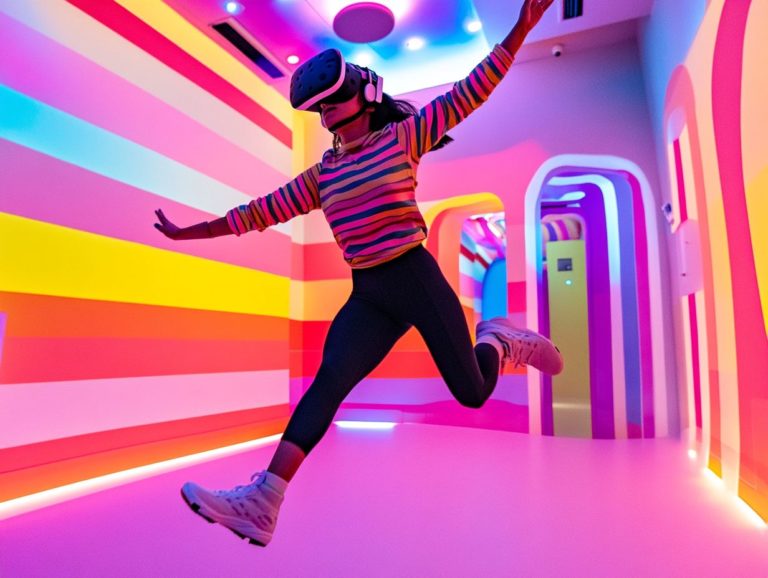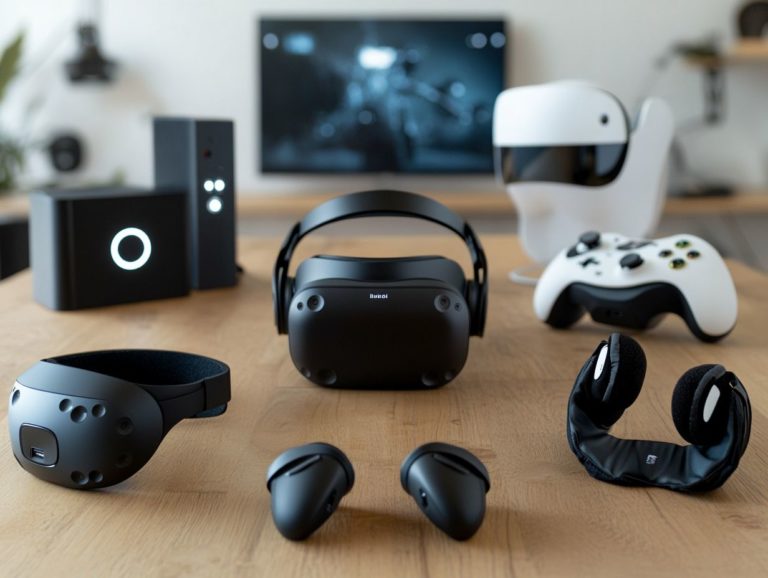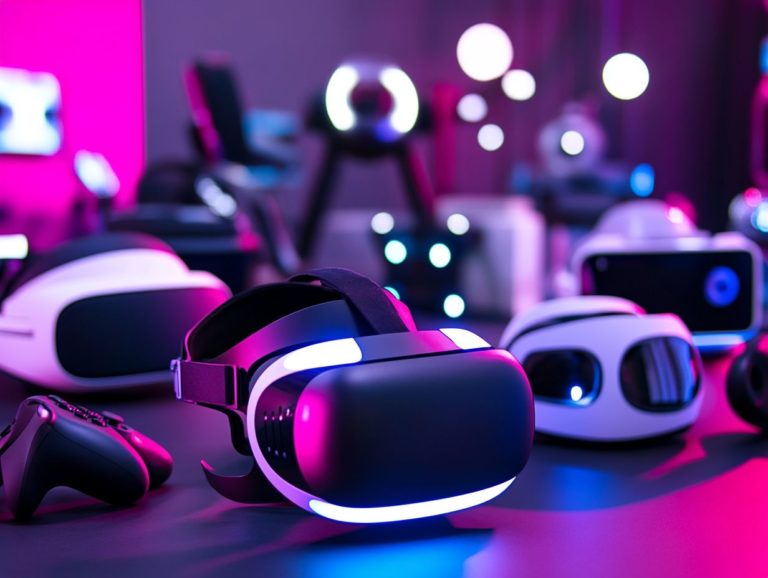5 vr safety tips every gamer should follow
Virtual reality gaming presents an unparalleled immersive experience, yet it also introduces distinct challenges and risks that you should be aware of.
To fully enjoy your VR adventures while prioritizing safety, it s vital to adopt a few key practices. From taking regular breaks to ensuring your comfort with the headset, there are five essential safety tips you should embrace.
Delve into potential risks, learn effective methods to prevent motion sickness, and uncover the best practices for multiplayer gaming. Discover how to cultivate a safe and enjoyable VR environment that enhances your gaming experience!
Contents
- Key Takeaways:
- 1. Take Breaks and Limit Your Time in VR
- 2. Adjust the Settings for Comfort
- 3. Keep the Play Area Clear and Safe
- 4. Use the Wrist Straps and Follow Room-Scale Guidelines
- 5. Stay Hydrated and Avoid Playing While Tired
- What Are the Potential Risks of VR Gaming?
- Frequently Asked Questions
- What are the five VR safety tips every gamer should follow?
- Why is it important to take breaks while playing VR games?
- How can staying hydrated improve my VR gaming experience?
- What does setting up a safe play area mean?
- Why should I use the wrist strap while playing VR games?
- How can I keep my VR headset clean?
Key Takeaways:
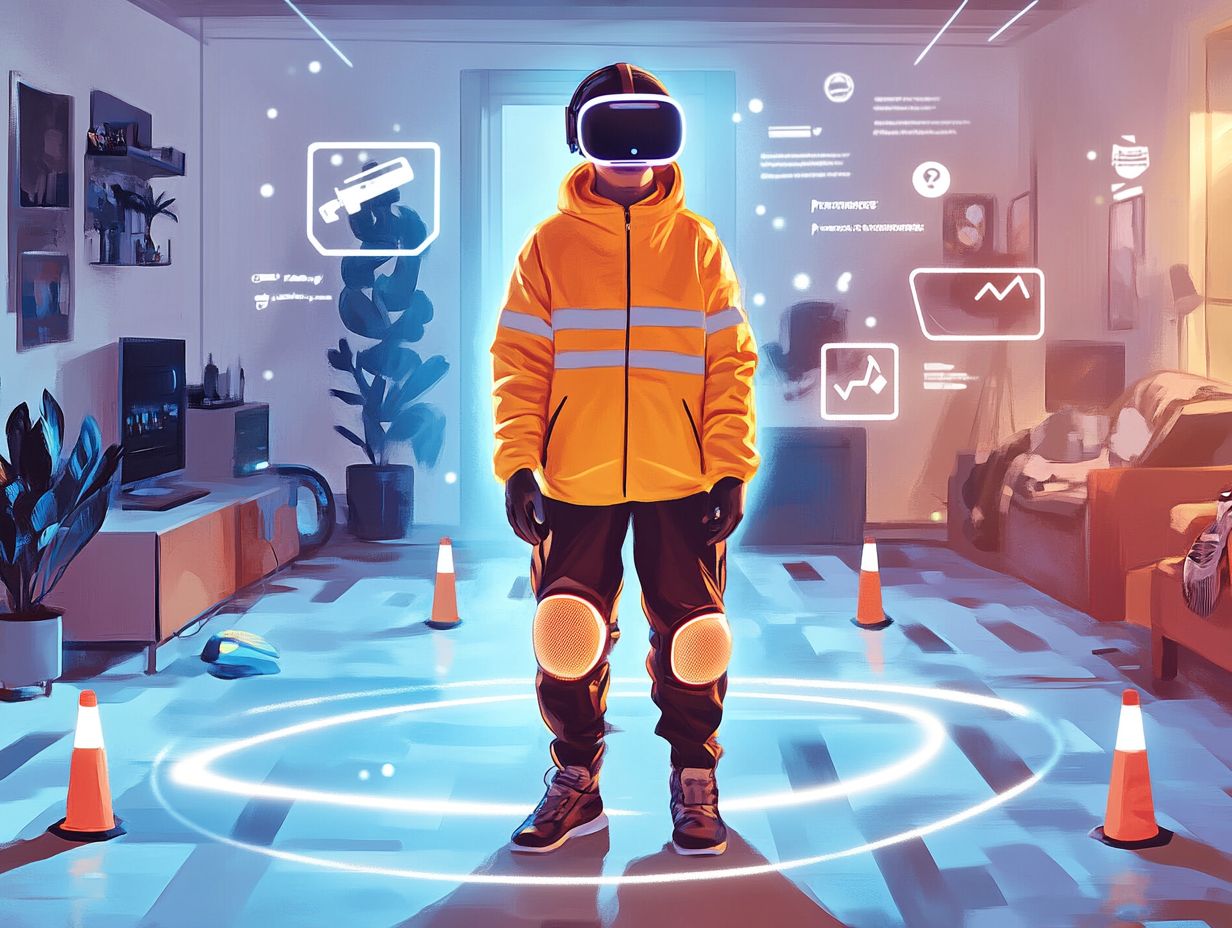
- Take regular breaks and limit your time in VR to prevent eye strain and fatigue.
- Adjust VR settings for comfort, including interpupillary distance (the distance between your eyes) and headset position.
- Keep the play area clear and safe to avoid tripping or bumping into objects while immersed in VR.
1. Take Breaks and Limit Your Time in VR
Taking breaks and limiting your time in virtual reality (VR) is essential for both your physical and psychological well-being, especially if you’re a child or teen immersed in VR gaming across various platforms.
Overindulgence in these captivating experiences can lead to discomfort and even physical injuries. That s why it s vital for parents to monitor usage and set guidelines that prioritize their child’s safety and emotional well-being during extended headset use.
Studies show that too much VR can cause problems like nausea, eye strain, and fatigue. In fact, research indicates that nearly 30% of children report experiencing discomfort after prolonged VR sessions.
Spending too much time in front of screens can impact mental health, heightening anxiety and diminishing overall emotional well-being.
To counteract these risks, parents should set strict time limits on VR gaming and encourage breaks every 30 minutes to promote physical activity.
These strategies not only foster healthier habits but also ensure that the immersive adventures of VR remain both enjoyable and safe.
2. Adjust the Settings for Comfort
Adjusting your settings for comfort in VR gaming is essential to elevate your immersive experience and minimize discomfort, particularly when using headsets designed for virtual reality. Proper calibration can significantly enhance how children and teens engage with this technology, ensuring that the experience remains safe and enjoyable.
One key aspect to consider is modifying the brightness levels, which can greatly influence how visuals are perceived and help prevent eye strain during extended gameplay sessions. You can also adjust the field of view to match your individual preferences, allowing you to feel fully enveloped in the simulated environment without overwhelming your senses.
Audio levels play an equally crucial role; striking the right balance can enhance your immersion while reducing any potential discomfort. If you re a parent, guiding your teens through these customizations can foster an environment where comfort is prioritized, contributing to a healthier and more positive gaming experience.
3. Keep the Play Area Clear and Safe
Keeping the play area clear and safe is essential for ensuring a secure and immersive experience while engaging in VR gaming, especially for children who are more susceptible to physical injuries.
A clutter-free environment not only amplifies the enjoyment of VR but also shields players from potential hazards.
To create the ideal VR play area, assess the space by removing any furniture, toys, or other obstacles that could lead to accidental bumps or falls. Ensuring there is ample room for movement is crucial; ideally, the play area should allow for a full range of physical activity without any constraints.
Utilizing clear visual boundaries, such as tape marks or designated mats, can help children grasp their play zones, reinforcing the concept of limits.
By establishing these guidelines, you can significantly reduce risks, fostering a safer and more engaging VR experience for your little ones.
Now that you know how to enjoy VR safely, gear up for your next adventure!
4. Use the Wrist Straps and Follow Room-Scale Guidelines
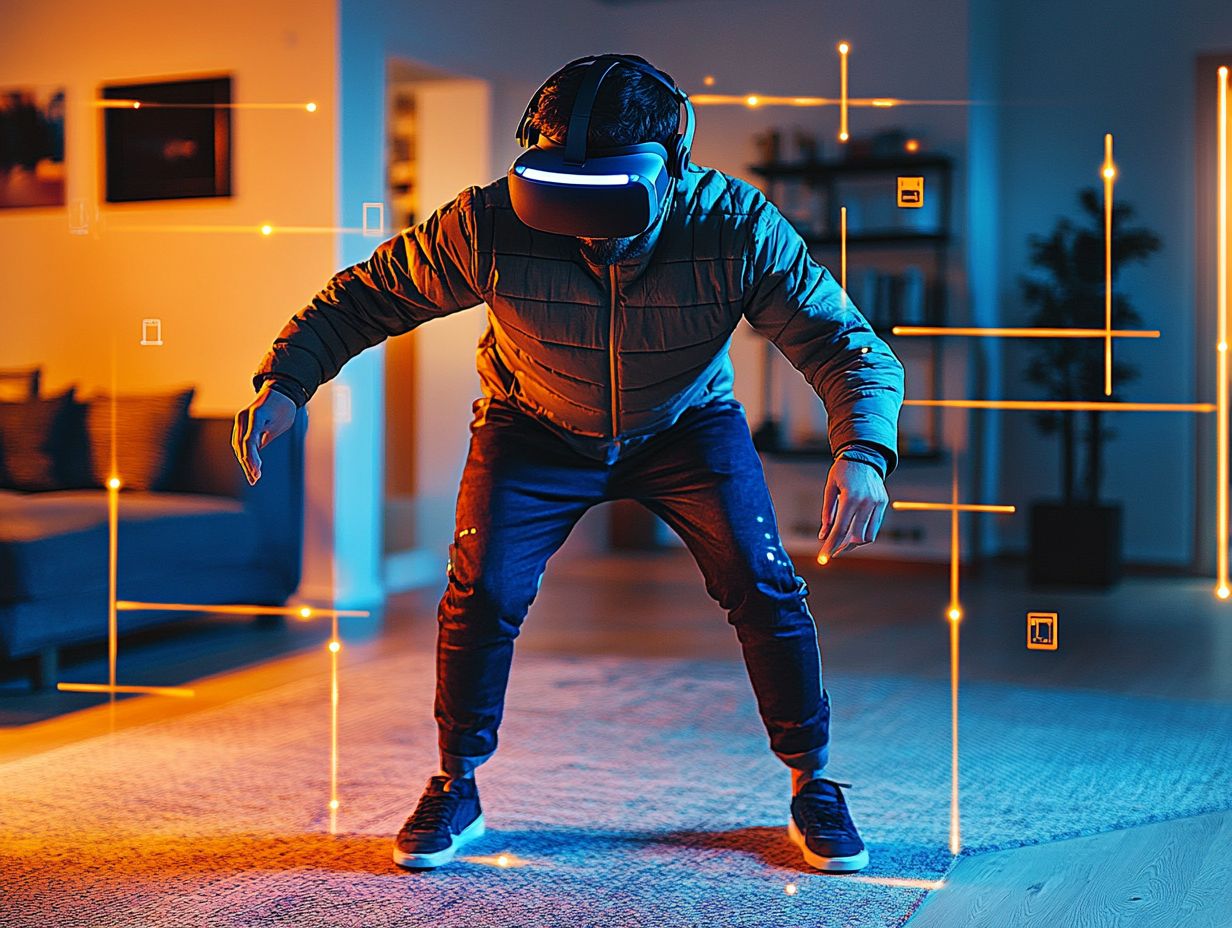
Using wrist straps and following room-scale guidelines cuts down the risk of injuries. This is especially important for kids and teens when engaging in VR experiences.
Proper use of these features boosts safety and makes gaming more enjoyable. Wrist straps provide an essential layer of security that keeps your VR controller from flying out of your hands during intense moments.
Being mindful of room-scale guidelines creates a safe environment, allowing for freedom of movement while remaining aware of surroundings.
Parents must make sure their kids know these tips! Supervise your children as they explore this thrilling technology and ensure they implement these safety measures effectively. Team up with your kids to make gaming both thrilling and safe!
5. Stay Hydrated and Avoid Playing While Tired
Staying hydrated and avoiding VR gaming when tired are essential tips to prevent injuries and stress. Parents should encourage their children to take breaks for hydration and rest during gameplay.
Hydration is critical for maintaining concentration and energy levels, especially in extended VR sessions. Dehydration can impair cognitive functions, making it tougher for young gamers to stay focused.
When kids push through gameplay while exhausted, the risk of strain and improper gameplay increases. Encourage kids to pause the game often to stay sharp and energized.
Parents can set timers for regular breaks, keep water within arm’s reach, and join their kids for hydration breaks. This reinforces a culture of well-being and balance during gaming activities.
What Are the Potential Risks of VR Gaming?
Understanding the potential risks of VR gaming is essential for parents. VR can cause real injuries and stress, especially for kids who may not fully grasp their virtual surroundings. By being aware of these risks, you can take steps to ensure a safe gaming experience for your children.
One notable risk is motion sickness, which feels like nausea or dizziness when the game moves faster than your body can handle. Extended sessions can also lead to fatigue and eye strain.
On the psychological side, the allure of these environments can foster addiction, making it hard for kids to detach from their virtual worlds. Emotional distress may also arise, particularly with intense scenarios or online bullying.
Stay alert to your children’s gaming habits. Check in regularly to keep their gaming fun and safe don’t wait for issues to arise!
How Can One Prevent Motion Sickness in VR?
Preventing motion sickness in VR gaming is crucial for maintaining a positive experience, especially for children who may be more susceptible to discomfort.
Here are some quick tips to help prevent motion sickness:
- Take frequent breaks to allow your brain and body to reset, relieving feelings of nausea.
- Adjust settings to reduce motion blur and increase the field of view for significant improvement.
- Select games that minimize rapid movements or sudden shifts in perspective, as these can trigger discomfort.
If you’re a parent or guardian, stay vigilant by watching for signs of unease. Offer guidance on pausing or adjusting gameplay to keep the experience enjoyable and safe.
What Are the Best Practices for Using VR Headsets?
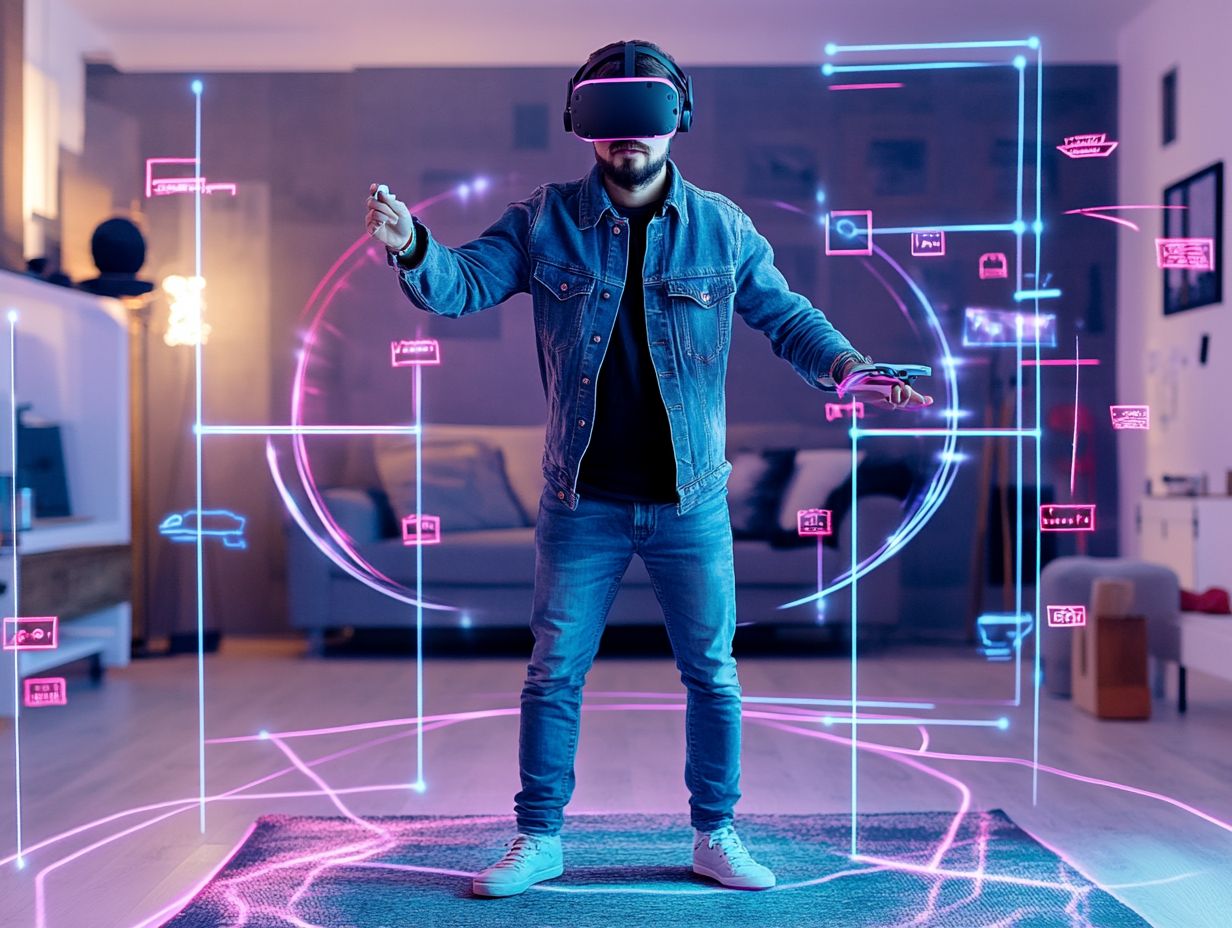
Learning best practices for using VR headsets is crucial for an unforgettable gaming adventure! This is especially important for younger players who need guidance in virtual worlds.
First, ensuring a proper fit is key. An ill-fitting headset can cause discomfort and distractions.
Adjust the headset properly so players can fully enjoy the immersive experience VR offers.
Next, tweak settings such as brightness and audio levels. This can greatly enhance comfort and reduce feelings of dizziness.
Help players understand game mechanics right away. This boosts their confidence as they tackle challenges.
Your role includes teaching them about time limits and the importance of breaks. This balance prioritizes safety while maximizing enjoyment.
How Can One Avoid Tripping or Bumping into Objects in VR?
Avoiding trips and bumps in VR is vital for safety. This is particularly true for children who may lose track of their physical surroundings.
Establish clear play area boundaries to help navigate the virtual space safely.
Visual markers like rugs or floor stickers can remind players to stay within their designated zones.
Encourage ongoing awareness of the surroundings. Regular breaks help reassess the environment.
As a parent, supervising your children is crucial. Guide them in practicing these safety strategies consistently.
A proactive approach reduces the risk of accidents while enjoying the captivating world of virtual reality!
What Are the Safety Measures for Playing Multiplayer VR Games?
Understanding safety measures for multiplayer VR games is essential. These experiences can evoke strong emotions that benefit from your guidance.
Implementing safety measures creates a secure environment for young players. Establish clear communication protocols so players can report inappropriate behavior quickly.
Monitor interactions closely. Ensure your children know who they are engaging with to help oversee any risky situations.
Set boundaries like time limits and privacy settings. This equips young gamers to navigate their experiences thoughtfully.
Your involvement helps them manage social dynamics and respond to challenges safely. Teach your children how to engage positively in these thrilling digital adventures!
What Should One Do If They Experience Discomfort or Pain While Playing VR?
If you feel discomfort or pain while using VR, it s essential to take immediate action to prioritize your safety, especially for children who may not fully understand their symptoms.
Knowing the steps to take can help reduce the risk of physical injuries and improve your gaming experience. Start by removing the VR headset and taking a moment to breathe and recover from any strain.
Engage in light stretching to ease tension. Prolonged immobility can make discomfort worse. If the pain continues, seek medical help right away to rule out any serious issues.
Utilizing any available reporting tools can also be helpful. These tools allow you to inform game developers about issues encountered during gameplay, contributing to a safer experience for future users.
If you re a parent, stay vigilant while monitoring your child s gameplay. Guide them through these processes, as younger players might easily overlook the importance of addressing any discomfort they feel.
Frequently Asked Questions
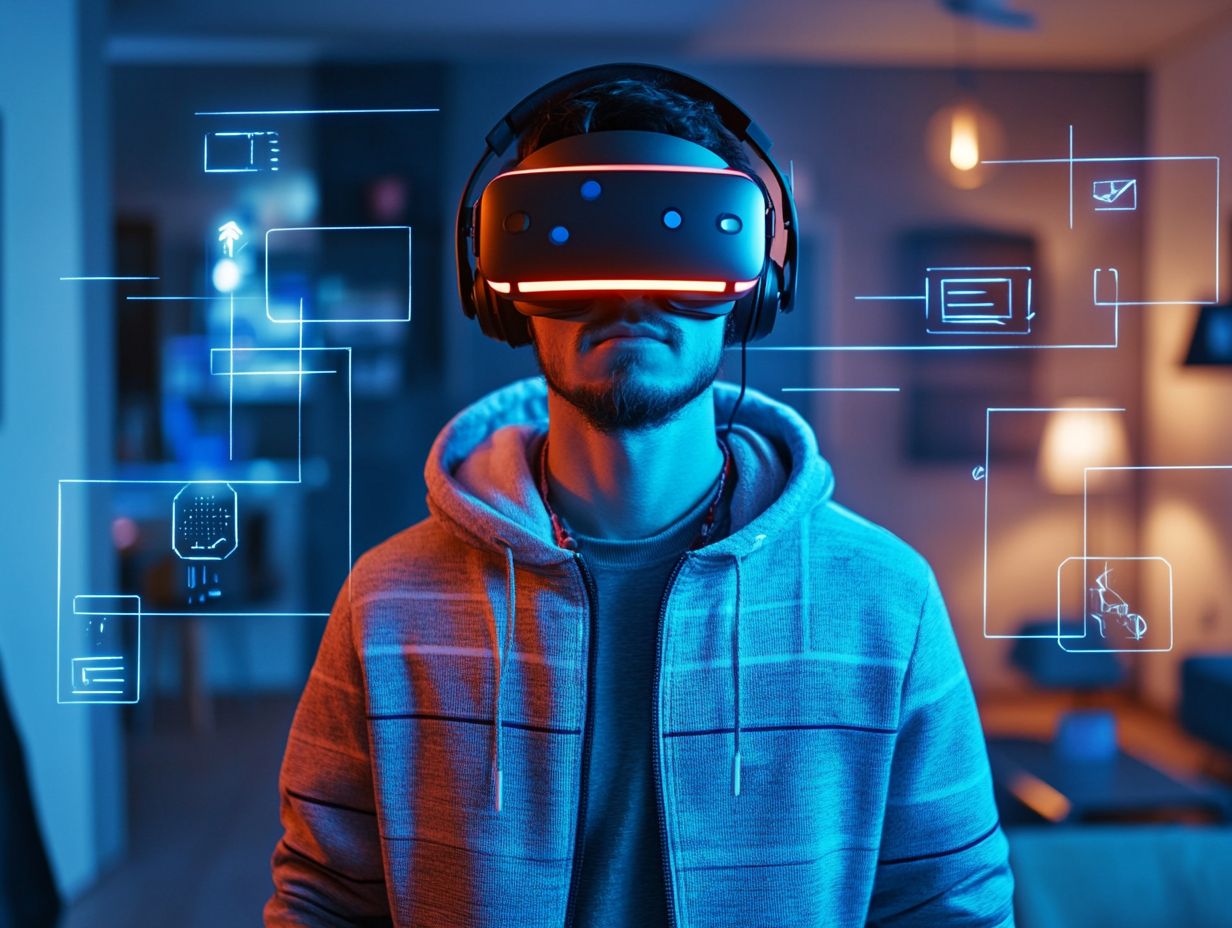
What are the five VR safety tips every gamer should follow?
The five VR safety tips every gamer should follow are: taking breaks, staying hydrated, setting up a safe play area, using the wrist strap, and keeping the headset clean. For a more in-depth look at these practices, refer to understanding VR safety guidelines.
Why is it important to take breaks while playing VR games?
Taking breaks is important because VR gaming can cause eye strain, motion sickness (a feeling of dizziness), and disorientation. It also gives your body a chance to rest and prevents fatigue.
How can staying hydrated improve my VR gaming experience?
Staying hydrated can prevent dizziness and headaches, which are common side effects of VR gaming. It also helps you stay alert and focused.
What does setting up a safe play area mean?
Setting up a safe play area means ensuring there are no obstacles or hazards that could cause you to trip or bump into something while wearing the VR headset. Make sure you have plenty of room to move around freely!
Why should I use the wrist strap while playing VR games?
The wrist strap keeps the VR controller attached to your wrist, preventing it from accidentally falling and potentially causing damage to the controller or surrounding objects.
How can I keep my VR headset clean?
To keep your VR headset clean, use a microfiber cloth to wipe down the lenses and avoid harsh chemicals that could damage the screen. Regularly clean the foam padding to prevent bacteria buildup.

